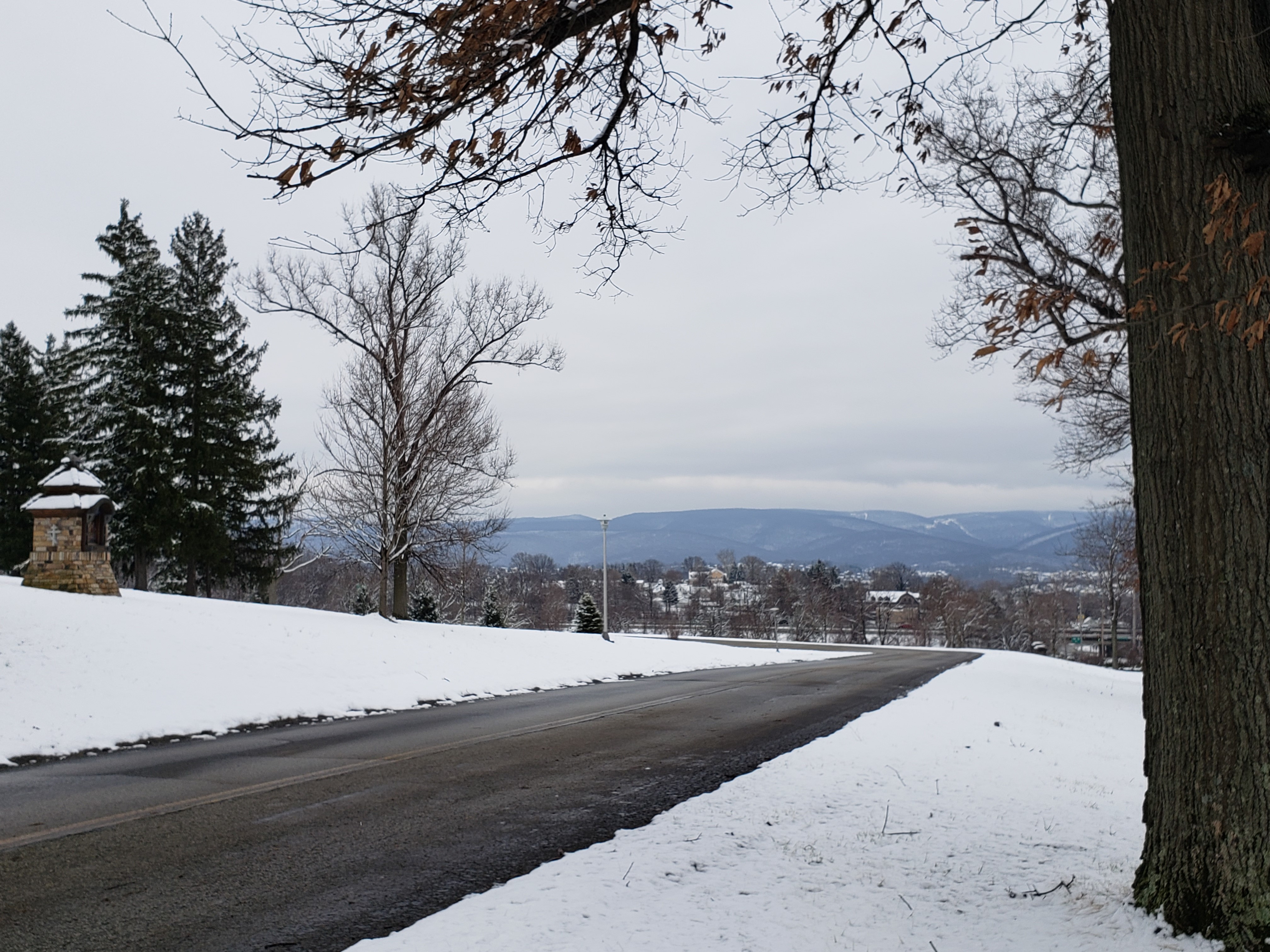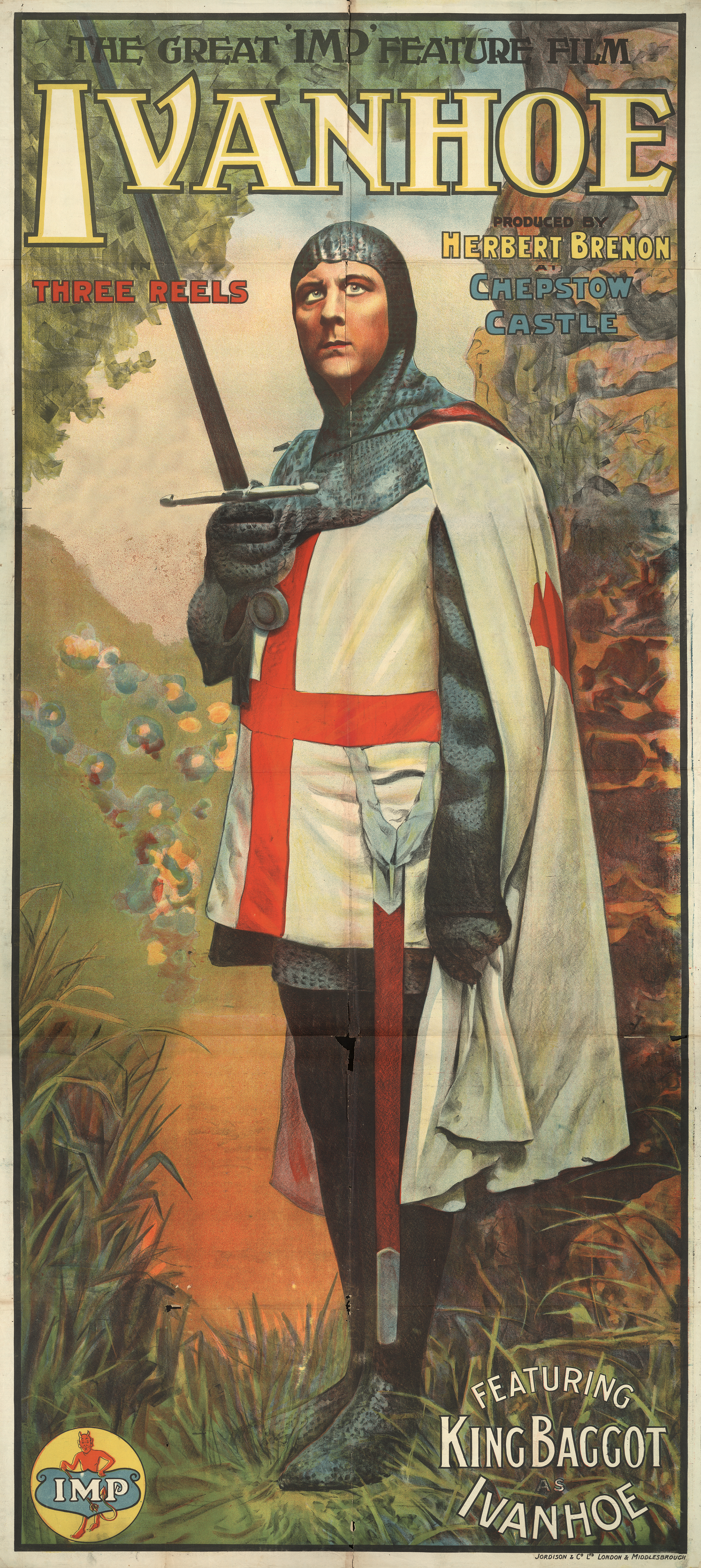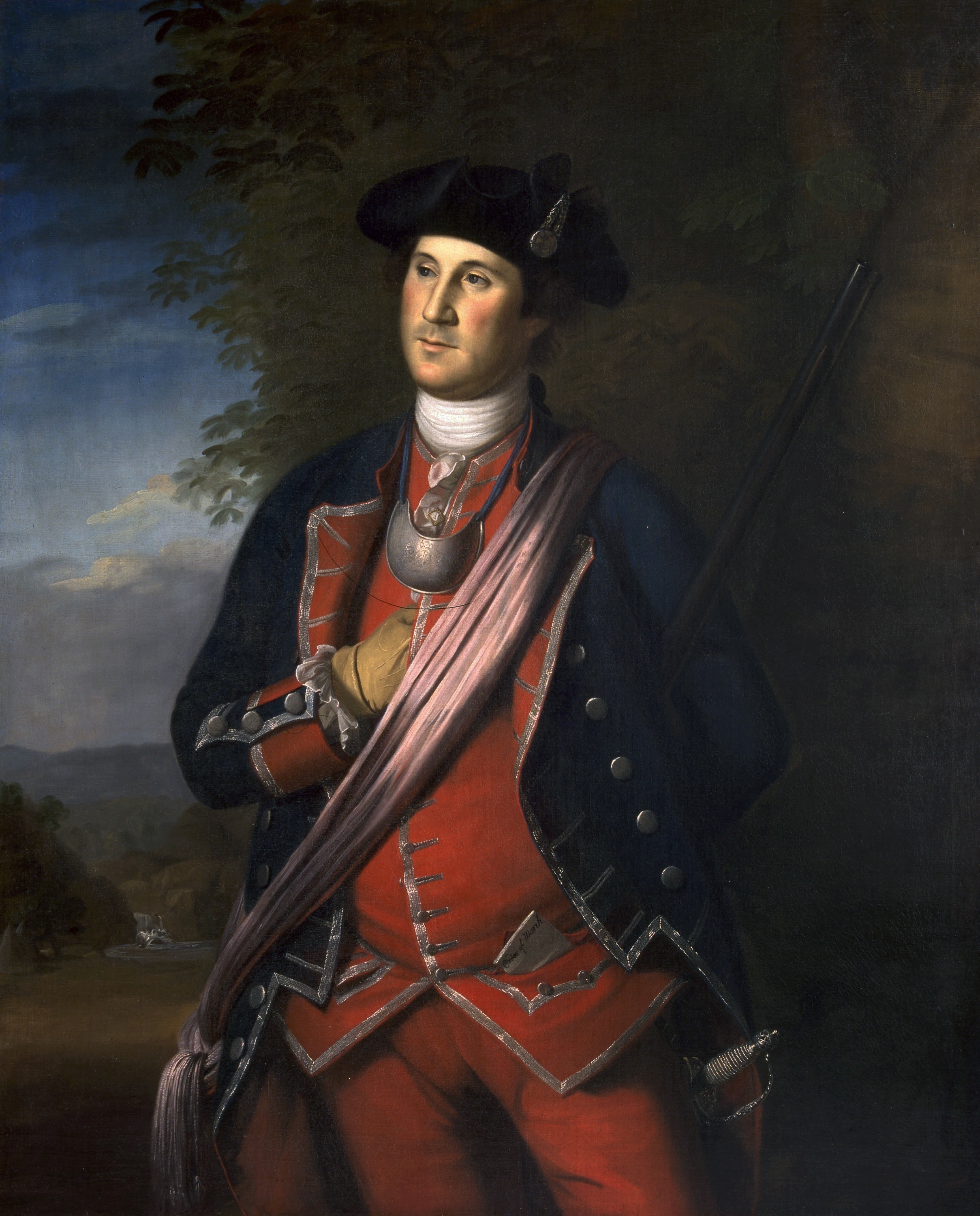|
Uniontown, PA
Uniontown is a city in Fayette County, Pennsylvania, United States, southeast of Pittsburgh and part of the Greater Pittsburgh Region. The population was 10,372 at the 2010 census, down from 12,422 at the 2000 census. It is the county seat and largest city of Fayette County. History Uniontown was founded by Henry Beeson on July 4, 1776. This was, coincidentally, the same date the United States Declaration of Independence was adopted. The National Road, also known as the Cumberland Road, was routed through Uniontown in the early 19th century, and the town grew along with the road (now US 40). southeast of Uniontown is Fort Necessity, built by George Washington during the French and Indian War (part of the international Seven Years' War) as well as the site of the Battle of Jumonville Glen, where the North American branch of the war began. Uniontown's role in the Underground Railroad in the antebellum years is commemorated by a marker on the corner of East Main Street and Baker ... [...More Info...] [...Related Items...] OR: [Wikipedia] [Google] [Baidu] |
List Of Cities In Pennsylvania
There are 57 cities in Pennsylvania. City (Pennsylvania), Pennsylvania cities may theoretically be first-class, second-class, second-class A, or third-class (of which there are 54), according to population and adoption of certain ordinances. However, all first-class (of which there is 1), second-class (of which there is 1), and second-class A (of which there is 1) cities, as well as 24 third-class cities, have adopted Home Rule Municipality (Pennsylvania), Home Rule Charters, which change a city's relationship with the state so much that they are generally no longer considered to be a city under state law. However, they are still List of boroughs in Pennsylvania, towns and boroughs and List of townships in Pennsylvania, townships, this list ''does'' include cities with Home Rule Charters, as, unlike in the previous cases, excluding them would severely limit the comprehensibility of this list. As in those previous cases, however, it should be strongly emphasized that these are not re ... [...More Info...] [...Related Items...] OR: [Wikipedia] [Google] [Baidu] |
Fort Necessity
Fort Necessity National Battlefield is a National Battlefield in Fayette County, Pennsylvania, United States, which preserves the site of the Battle of Fort Necessity. The battle, which took place on July 3, 1754, was an early battle of the French and Indian War, and resulted in the surrender of British colonial forces under Colonel George Washington, to the French and Indians, under Louis Coulon de Villiers. The site also includes the Mount Washington Tavern, once one of the inns along the National Road, and in two separate units the grave of British General Edward Braddock, killed in 1755, and the site of the Battle of Jumonville Glen. Battle of Fort Necessity (1754) After returning to the great meadows in northwestern Virginia, and what is now Fayette County, Pennsylvania, George Washington decided it prudent to reinforce his position. Supposedly named by Washington as Fort Necessity or Fort of Necessity, the structure protected a storehouse for supplies such as gunpow ... [...More Info...] [...Related Items...] OR: [Wikipedia] [Google] [Baidu] |
Universal Films
Universal Pictures (legally Universal City Studios LLC, also known as Universal Studios, or simply Universal; common metonym: Uni, and formerly named Universal Film Manufacturing Company and Universal-International Pictures Inc.) is an American film production and distribution company owned by Comcast through the NBCUniversal Film and Entertainment division of NBCUniversal. Founded in 1912 by Carl Laemmle, Mark Dintenfass, Charles O. Baumann, Adam Kessel, Pat Powers, William Swanson, David Horsley, Robert H. Cochrane, and Jules Brulatour, Universal is the oldest surviving film studio in the United States; the world's fifth oldest after Gaumont, Pathé, Titanus, and Nordisk Film; and the oldest member of Hollywood's "Big Five" studios in terms of the overall film market. Its studios are located in Universal City, California, and its corporate offices are located in New York City. In 1962, the studio was acquired by MCA, which was re-launched as NBCUniversal in 2004. Univer ... [...More Info...] [...Related Items...] OR: [Wikipedia] [Google] [Baidu] |
Carl Laemmle
Carl Laemmle (; born Karl Lämmle; January 17, 1867 – September 24, 1939) was a film producer and the co-founder and, until 1934, owner of Universal Pictures. He produced or worked on over 400 films. Regarded as one of the most important of the early film pioneers, Laemmle was born in what is now Germany. He immigrated to the United States in 1884 and worked in Chicago for 20 years before he began buying nickelodeons, eventually expanding into a film distribution service, the Laemmle Film Service, then into production as Independent Moving Pictures Company (IMP), later renamed Universal Film Manufacturing Company, and later still renamed Universal Pictures Company. Early life and education Karl Lämmle was born in 1867 to Julius Baruch Lämmle and Rebekka Lämmle, a Jewish couple in the Radstrasse, a street in the Jewish quarter of Laupheim, in the Kingdom of Württemberg. His father was a cattle merchant, also involved in land transactions. The family struggled financial ... [...More Info...] [...Related Items...] OR: [Wikipedia] [Google] [Baidu] |
Steel
Steel is an alloy made up of iron with added carbon to improve its strength and fracture resistance compared to other forms of iron. Many other elements may be present or added. Stainless steels that are corrosion- and oxidation-resistant typically need an additional 11% chromium. Because of its high tensile strength and low cost, steel is used in buildings, infrastructure, tools, ships, trains, cars, machines, electrical appliances, weapons, and rockets. Iron is the base metal of steel. Depending on the temperature, it can take two crystalline forms (allotropic forms): body-centred cubic and face-centred cubic. The interaction of the allotropes of iron with the alloying elements, primarily carbon, gives steel and cast iron their range of unique properties. In pure iron, the crystal structure has relatively little resistance to the iron atoms slipping past one another, and so pure iron is quite ductile, or soft and easily formed. In steel, small amounts of carbon, other ... [...More Info...] [...Related Items...] OR: [Wikipedia] [Google] [Baidu] |
Iron
Iron () is a chemical element with symbol Fe (from la, ferrum) and atomic number 26. It is a metal that belongs to the first transition series and group 8 of the periodic table. It is, by mass, the most common element on Earth, right in front of oxygen (32.1% and 30.1%, respectively), forming much of Earth's outer and inner core. It is the fourth most common element in the Earth's crust. In its metallic state, iron is rare in the Earth's crust, limited mainly to deposition by meteorites. Iron ores, by contrast, are among the most abundant in the Earth's crust, although extracting usable metal from them requires kilns or furnaces capable of reaching or higher, about higher than that required to smelt copper. Humans started to master that process in Eurasia during the 2nd millennium BCE and the use of iron tools and weapons began to displace copper alloys, in some regions, only around 1200 BCE. That event is considered the transition from the Bronze Age to the Iron A ... [...More Info...] [...Related Items...] OR: [Wikipedia] [Google] [Baidu] |
Columbia Rolling Mill
The Columbia Rolling Mill, an iron and steel works, operated in Uniontown, Pennsylvania from 1887 to 1895. In 1895 it was sold to Andrew Carnegie, who moved the mill to Homestead, Pennsylvania. The mill was Uniontown's largest industry in the early 1890s. History The Columbia Rolling Mill had a substantial number of employees, especially in its first years of operation. It was serviced by the Baltimore and Ohio Railroad. The mill reported marginal gains in 1887, 1888, and 1889. Although the gains were small, it proved those who thought the mill would quickly fold to be wrong. A small-scale strike hampered the mill in 1890. In 1891 and 1892, the mill reported losses. However, in 1893 the mill recovered and in 1894, the mill took in substantial gains. 1895 appeared to be another solid year, when suddenly, the mill was sold and moved. Andrew Carnegie paid an impressive sum for the mill and many Uniontown citizens lost their jobs. The Columbia Rolling Mill had since been a topic of gr ... [...More Info...] [...Related Items...] OR: [Wikipedia] [Google] [Baidu] |
Bituminous Coal Miners' Strike Of 1894
The bituminous coal miners' strike was an unsuccessful national eight-week strike by miners of bituminous coal in the United States, which began on April 21, 1894. The panic of 1893 hit the coal mining industry particularly hard. Wage cuts in the industry began immediately, and wages were slashed again in early 1894. By the late spring of 1894, the United Mine Workers, which had a mere $2,600 in its treasury and a paid membership of 13,000, called a general strike in the bituminous coal mining industry. The demand was for wages to return to the level they were at on May 1, 1893. Initially, the strike was a major success. More than 180,000 miners in Colorado, Illinois, Ohio, Pennsylvania and West Virginia struck. In Illinois, 25,207 miners went on strike, while only 610 continued to work through the strike, with the average Illinois miner out of work for 72 days because of the strike. But the mine owners were unwilling and/or unable to restore wages. Some owners adjusted ... [...More Info...] [...Related Items...] OR: [Wikipedia] [Google] [Baidu] |
Coke (fuel)
Coke is a grey, hard, and porous coal-based fuel with a high carbon content and few impurities, made by heating coal or oil in the absence of air—a destructive distillation process. It is an important industrial product, used mainly in iron ore smelting, but also as a fuel in stoves and forges when air pollution is a concern. The unqualified term "coke" usually refers to the product derived from low-ash and low-sulphur bituminous coal by a process called coking. A similar product called petroleum coke, or pet coke, is obtained from crude oil in oil refineries. Coke may also be formed naturally by geologic processes.B. Kwiecińska and H. I. Petersen (2004): "Graphite, semi-graphite, natural coke, and natural char classification — ICCP system". ''International Journal of Coal Geology'', volume 57, issue 2, pages 99-116. History China Historical sources dating to the 4th century describe the production of coke in ancient China. The Chinese first used coke for heating ... [...More Info...] [...Related Items...] OR: [Wikipedia] [Google] [Baidu] |
Slavery In The United States
The legal institution of human chattel slavery, comprising the enslavement primarily of Africans and African Americans, was prevalent in the United States of America from its founding in 1776 until 1865, predominantly in the South. Slavery was established throughout European colonization in the Americas. From 1526, during early colonial days, it was practiced in what became Britain's colonies, including the Thirteen Colonies that formed the United States. Under the law, an enslaved person was treated as property that could be bought, sold, or given away. Slavery lasted in about half of U.S. states until abolition. In the decades after the end of Reconstruction, many of slavery's economic and social functions were continued through segregation, sharecropping, and convict leasing. By the time of the American Revolution (1775–1783), the status of enslaved people had been institutionalized as a racial caste associated with African ancestry. During and immediately ... [...More Info...] [...Related Items...] OR: [Wikipedia] [Google] [Baidu] |
Underground Railroad
The Underground Railroad was a network of clandestine routes and safe houses established in the United States during the early- to mid-19th century. It was used by enslaved African Americans primarily to escape into free states and Canada. The network was assisted by abolitionists and others sympathetic to the cause of the escapees. The enslaved persons who risked escape and those who aided them are also collectively referred to as the "Underground Railroad". Various other routes led to Mexico, where slavery had been abolished, and to islands in the Caribbean that were not part of the slave trade. An earlier escape route running south toward Florida, then a Spanish possession (except 1763–1783), existed from the late 17th century until approximately 1790. However, the network now generally known as the Underground Railroad began in the late 18th century. It ran north and grew steadily until the Emancipation Proclamation was signed by President Abraham Lincoln.Vox, Lisa"How D ... [...More Info...] [...Related Items...] OR: [Wikipedia] [Google] [Baidu] |
Battle Of Jumonville Glen
The Battle of Jumonville Glen, also known as the Jumonville affair, was the opening battle of the French and Indian War, fought on May 28, 1754, near present-day Hopwood and Uniontown in Fayette County, Pennsylvania. A company of provincial troops from Virginia under the command of Lieutenant Colonel George Washington, and a small number of Mingo warriors led by the chieftain Tanacharison (also known as the "Half King"), ambushed a force of 35 Canadiens under the command of Joseph Coulon de Jumonville. A larger French Canadien force had driven off a small crew attempting to construct a British fort under the auspices of the Ohio Company at present-day Pittsburgh, Pennsylvania, land claimed by the French. A British colonial force led by George Washington was sent to protect the fort under construction. The French Canadiens sent Jumonville to warn Washington about encroaching on French-claimed territory. Washington was alerted to Jumonville's presence by Tanacharison, and th ... [...More Info...] [...Related Items...] OR: [Wikipedia] [Google] [Baidu] |





